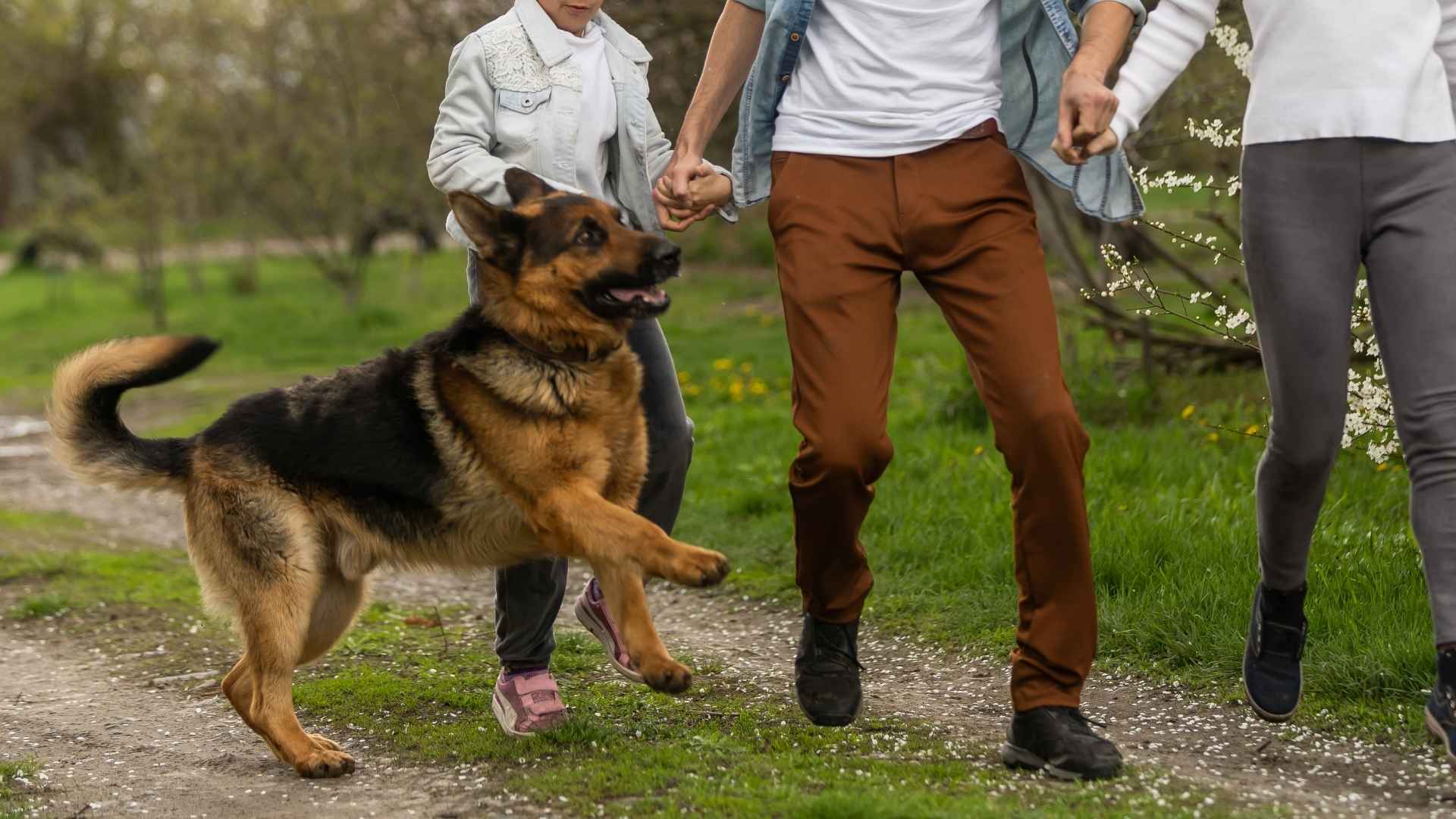When you think of a guard dog, the image that often comes to mind is a serious, no-nonsense protector. But what if your canine companion could be both a vigilant guardian and a joyful playmate? Some breeds excel not only at keeping watch but also at being the life of the backyard, the hiking trail, or the living room floor.
These dogs thrive on interaction, love mental and physical stimulation, and can switch from “security mode” to “let’s play fetch” in a heartbeat. The right playful guard dog can give you the best of both worlds—protection with a wagging tail.
In this article, we’ll explore seven breeds that master this balance, offering loyalty, intelligence, and an endless appetite for fun.
Whether you’re looking for a family protector or an active companion, these breeds will keep your home safe and your heart full.
Playful Guard Dog Breeds that Enjoy Daily Interactions
1. Boxer
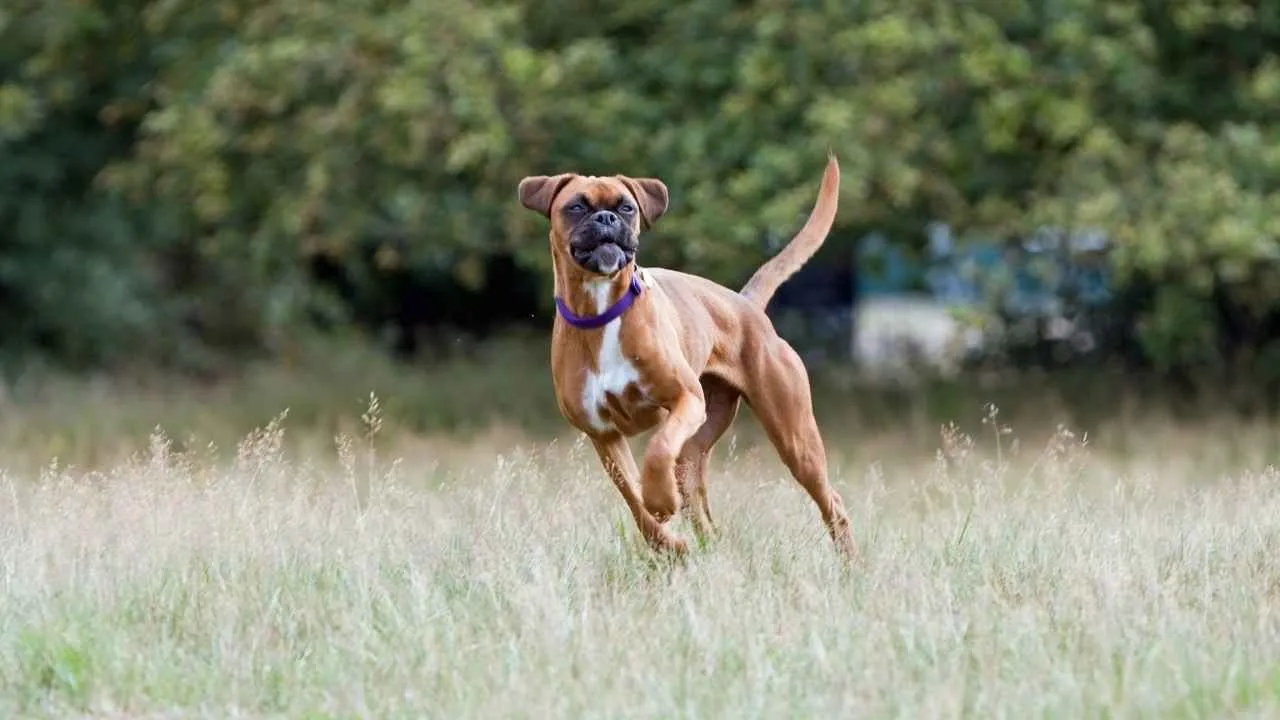
Boxers are often described as “the Peter Pan of dogs” due to their puppy-like behavior that persists well into adulthood. They are intelligent, spirited, and highly energetic, which makes them excellent playmates for active families. Their innate protectiveness, paired with a loving nature, also makes them reliable guard dogs for homes with children.
Though Boxers are known for their silly personalities, they’re also keenly alert and courageous. These traits contribute to their reputation as reliable watchdogs, ready to protect their family when needed. With the right training, they balance playfulness and discipline remarkably well.
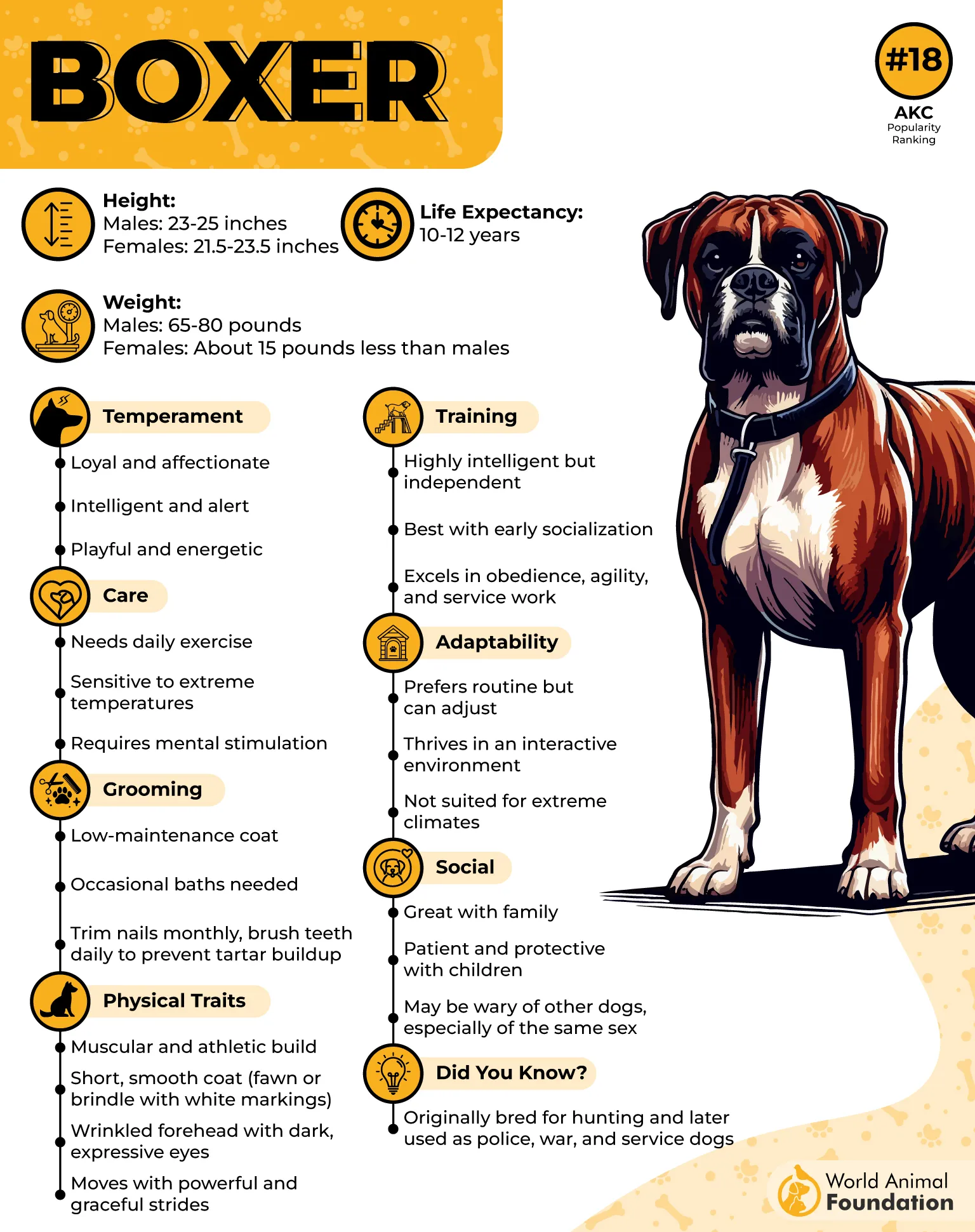
This breed thrives on plenty of daily interaction. They don’t do well when left alone for long periods, as their social nature can lead to boredom-related behavior. Boxer owners often find themselves entertained by the dog’s animated expressions and clownish charm.
Physically, Boxers have a lean, muscular build that enables bursts of speed and agility. According to the AKC, their short coat is low-maintenance, but they do best in moderate climates due to sensitivity to extreme heat and cold. Regular exercise is essential to keep their energy levels in check.
Because they crave companionship and thrive on routine, Boxers do well in homes where they can be part of daily activities. For owners looking for both a family protector and a daily dose of humor, the Boxer is a rewarding companion.
Quick Tips
Incorporate agility or obedience games into daily play to satisfy both mental and physical needs.
Use consistent, positive reinforcement to harness their intelligence and prevent stubborn behavior.
2. Doberman Pinscher
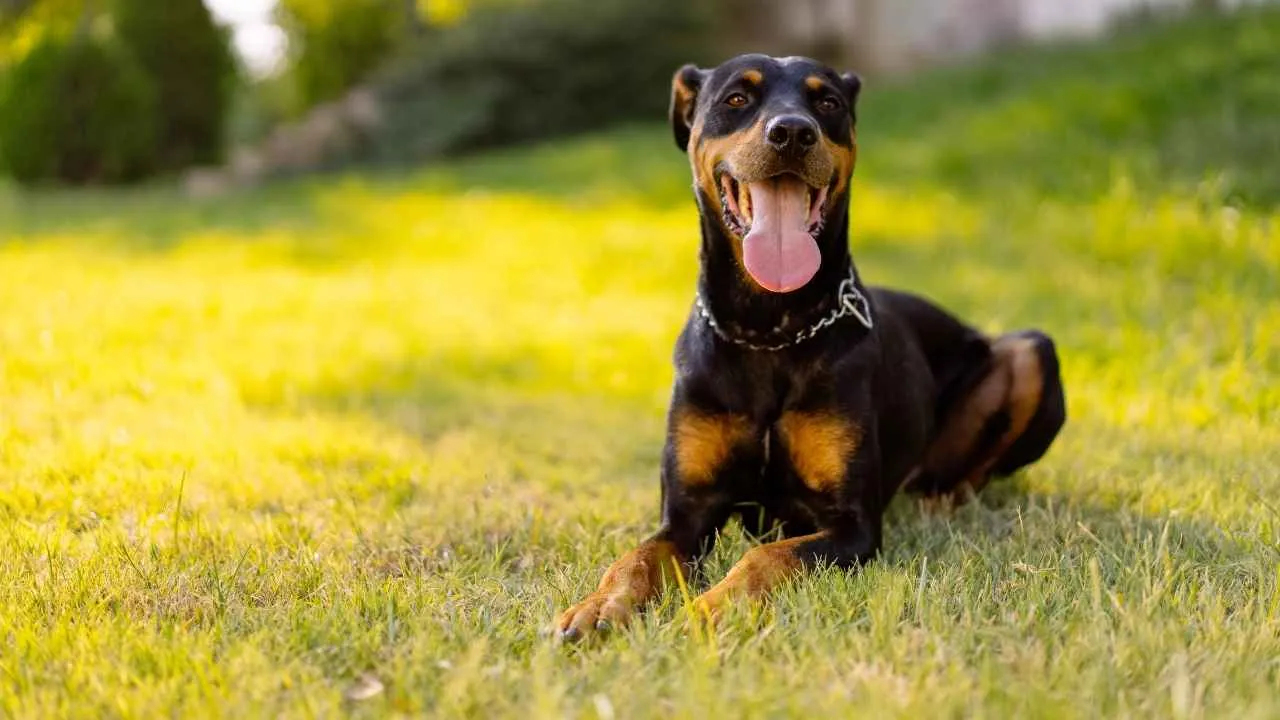
Doberman Pinschers are often recognized for their sleek, elegant appearance paired with intense loyalty and intelligence. Originally bred for protection, they are one of the top personal guard dog breeds due to their attentiveness and devotion to their owners. Despite their tough exterior, Dobermans are affectionate and enjoy close contact with their family.
This breed thrives when given a purpose or task. Whether it’s obedience training, scent work, or agility, Dobermans excel in activities that challenge their minds and bodies. Their quick learning ability makes them highly trainable, although they do best with experienced handlers.
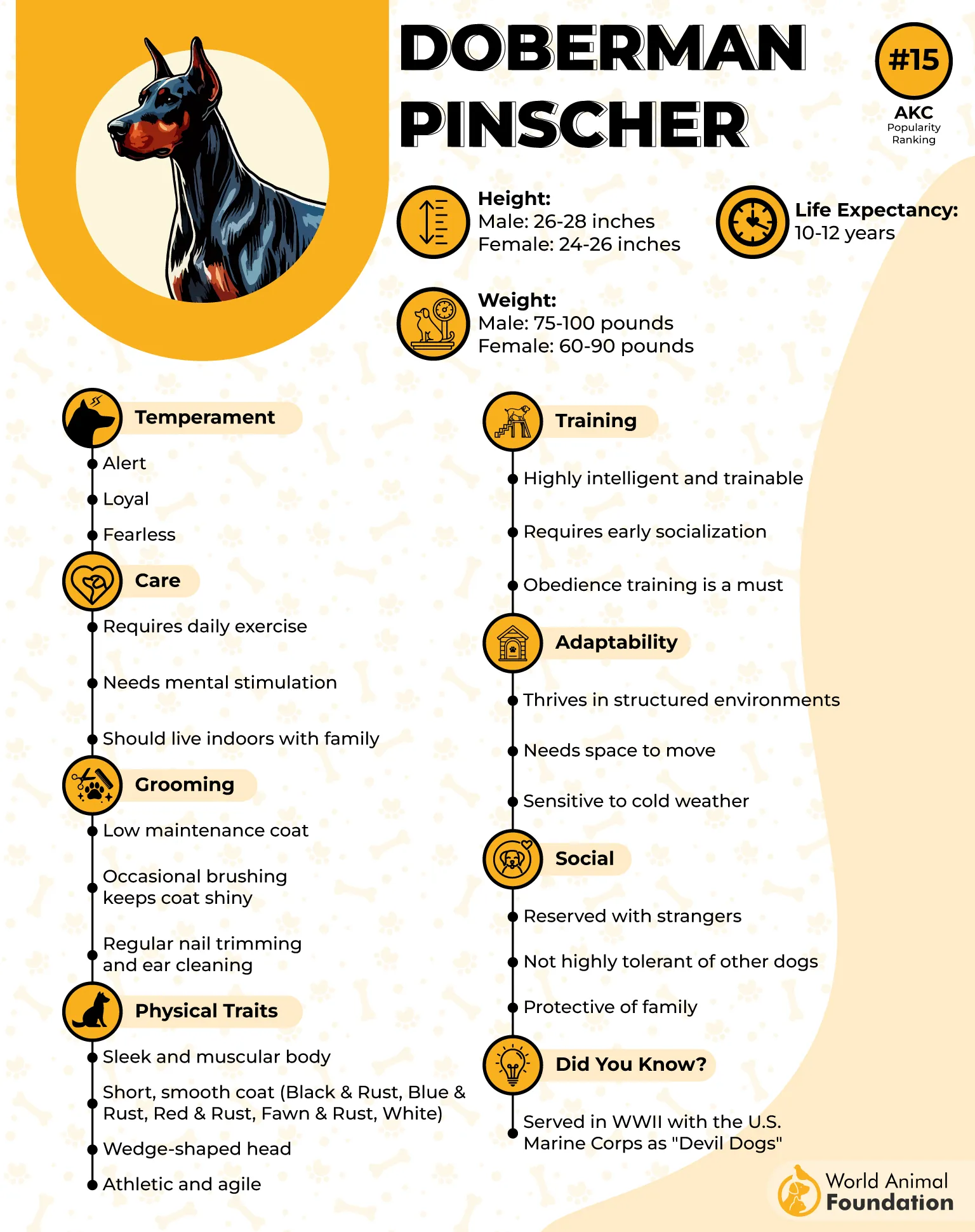
Known for being velcro dogs, Dobermans tend to form strong bonds with their people and prefer to be near them as much as possible. This deep loyalty makes them great family dogs, provided they are properly socialized from a young age. They may be reserved with strangers but rarely aggressive without reason.
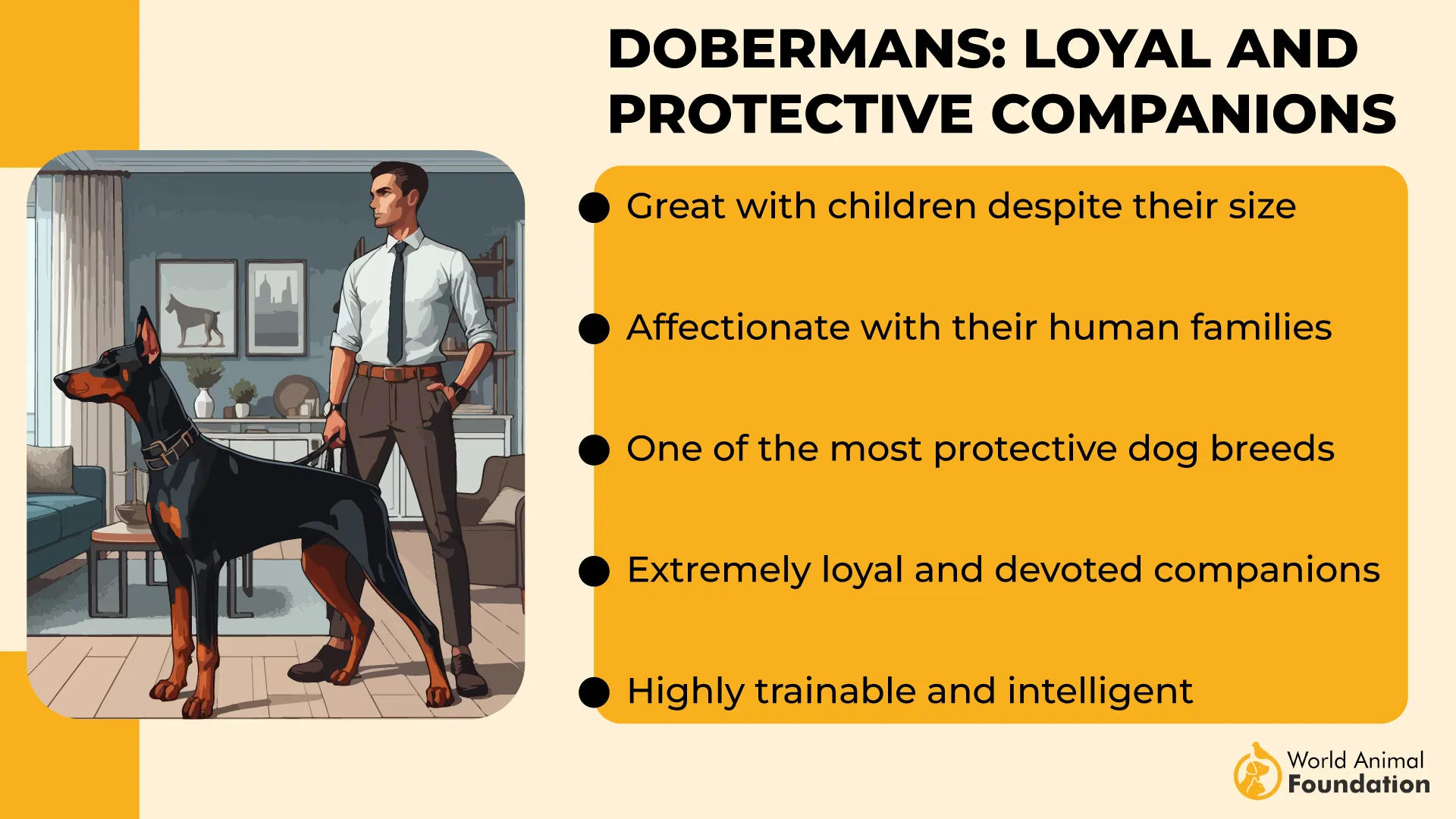
Their muscular build, keen senses, and alert disposition make them ideal for both protection and athletic pursuits. However, they do require structured outlets for their energy to prevent restlessness or destructive habits. Long walks, structured play, and obedience drills go a long way.
While they can be protective, Dobermans also enjoy daily interaction and playful routines with their families. This makes them a compelling choice for owners looking for a devoted dog that’s just as happy jogging beside them as guarding the home.
Quick Tips
Establish clear boundaries early and maintain structured training routines.
Socialize from puppyhood to reduce wariness around unfamiliar people or environments.
3. Australian Shepherd
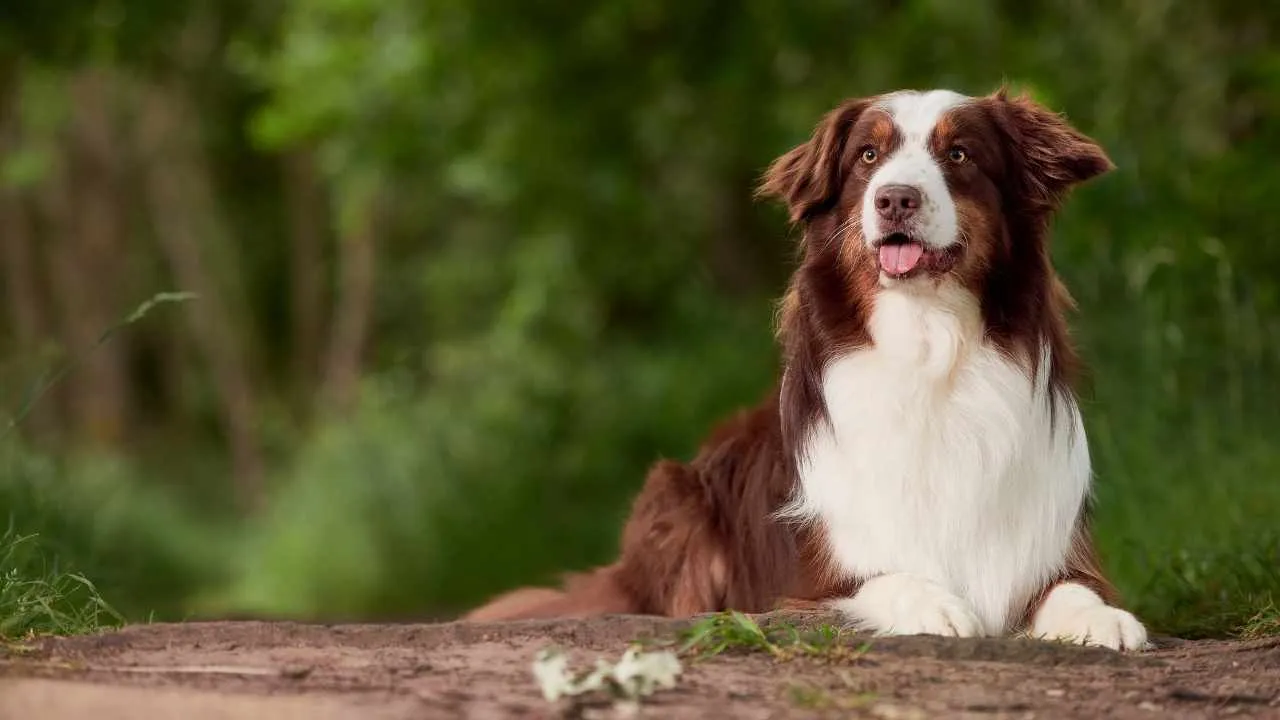
Australian Shepherds are natural athletes with boundless energy and sharp intelligence. Originally bred to herd livestock, they’re happiest when given tasks to complete or space to run. Their sharp instincts and fast reflexes make them excellent working dogs, often seen in canine sports or obedience competitions.
One of the defining traits of this breed is its eagerness to please. Australian Shepherds respond well to training and often enjoy the learning process itself. From basic commands to advanced tricks, they thrive on mental stimulation and positive feedback.

Because of their protective instincts, Aussies make excellent watchful companions. While not naturally aggressive, they are alert and may be cautious around strangers, making them suitable for families wanting both energy and security. Regular socialization helps refine this trait positively.
The Australian Shepherd’s coat is medium-length and may require weekly brushing to prevent matting. Their famous merle patterns and bright eyes give them a distinctive, striking appearance. Regular grooming also provides an opportunity to check for ticks and skin issues, especially if they spend time outdoors.
This breed needs more than just a backyard—they require time, interaction, and purpose. For homes that can match their enthusiasm and offer varied activity, Aussies provide loyalty, intelligence, and spirited companionship.
Quick Tips
Rotate enrichment activities like herding balls or scent games to keep boredom at bay.
Prioritize daily off-leash time in secure areas to meet their need for fast-paced movement.
4. German Shepherd
Breed Profile
Size: Large
Weight: 65–90 lbs (male), 50–70 lbs (female)
Temperament: Confident, courageous, intelligent
The German Shepherd is best known as one of the most versatile and trainable breeds in the world. Originally developed in Germany as a herding dog, it has since become a top choice for service, military, and police roles thanks to its intelligence and work ethic. This breed’s physical agility and mental sharpness make it ideal for active, structured lifestyles.
With a naturally aloof nature, German Shepherds may not be immediately welcoming to strangers, which supports their role as excellent watchdogs. However, they’re deeply loyal to their families and develop strong bonds. Their temperament blends nobility with protectiveness, and when properly trained, they are calm, responsive, and even affectionate.
Daily engagement is vital for this breed, not just for exercise but also for mental stimulation. Without regular outlets for their energy and smarts, German Shepherds may develop destructive behaviors. Training games, agility exercises, and advanced obedience tasks are great ways to keep them focused.
Physically, the breed displays smooth curves over angles, with a strong, athletic build and a fluid, easy gait. Their double coat requires routine brushing, particularly during shedding seasons. They are hardy dogs and typically live 12 to 14 years with proper care.
In households that provide time, space, and structure, the German Shepherd excels. As both protectors and companions, they thrive on purpose and partnership, making them ideal for those who want a highly capable dog.
Quick Tips
Introduce socialization early to balance their natural wariness of strangers.
Engage them in structured activities such as agility or tracking to fulfill mental needs.
5. Bernese Mountain Dog
Breed Profile
Size: Large
Weight: 80–115 lbs (male), 70–95 lbs (female)
Temperament: Gentle, loyal, even-tempered
The Bernese Mountain Dog, or Berner, is a strikingly beautiful working dog with a sweet and steady disposition. Known for their tri-colored coat and expressive eyes, these dogs bring both power and warmth into the home. While they are large and strong, they are also affectionate and tend to be gentle with children and other pets.
Berners were originally farm dogs in Switzerland, bred to pull carts and guard livestock. Today, those traits still surface in their love of purpose and devotion to family. Despite their size, they are not overly energetic, but they do require daily movement and enjoy outdoor time, especially in cooler climates.
Their long, double-layered coat requires consistent grooming to manage shedding and prevent matting. Shedding increases with seasonal changes, so expect frequent brushing sessions during spring and fall. While they are clean dogs overall, some individuals are prone to drooling, especially those with loose jowls.
This breed thrives on human companionship and can become anxious if left alone for extended periods. They are not suited for people who are gone most of the day. Their gentle, playful nature makes them ideal for families who want a watchdog with a soft heart.
Although they aren’t the longest-lived dogs, with an average lifespan of 7–10 years, they make a lasting impression. Their calm presence and eager-to-please demeanor create bonds that run deep and strong.
Quick Tips
Make grooming a bonding experience by starting regular brushing when they’re young.
Keep them cool during warm months as their thick coat retains heat.
6. Standard Schnauzer
The Standard Schnauzer is a well-rounded breed with a sharp mind and a bold personality. Originating as a farm dog in Germany, this breed excelled at guarding, herding, and vermin control. Their distinctive beard and bushy eyebrows add charm to an already expressive face.
Highly intelligent and attentive, Schnauzers need a steady supply of mental challenges to stay content. They thrive on routine interaction and prefer being active participants in household life. If they’re left to their own devices, their cleverness can lead to mischief or overly protective behavior.
This breed is known for its medium build and wiry double coat, which comes in black or salt-and-pepper. Grooming can be a commitment, especially for those choosing to hand-strip instead of clip. Regular brushing helps control debris buildup and keeps their unique coat healthy.
They’re known to be vocal, alerting owners to any unusual activity, but aren’t excessive barkers when properly trained. Their balanced temperament and eagerness to work make them suitable for obedience, tracking, and even therapy roles.
For families seeking a loyal companion that brings both brains and energy to the table, the Standard Schnauzer is a breed that adapts well to most environments, with enough stimulation and attention.
Quick Tips
Use food puzzles or scent games to channel their high intelligence.
Keep grooming consistent to maintain coat quality and minimize matting.
7. Rhodesian Ridgeback
Originally bred in southern Africa to track large game—including lions—the Rhodesian Ridgeback is an athletic, courageous dog with a unique ridge of hair running along its back. Behind their muscular frame lies a calm and sensitive nature, often described as dignified.
PetMD states that Ridgebacks are quiet, loyal, and deeply bonded to their families. They’re affectionate without being clingy, but can be reserved or aloof around strangers. Early training and socialization are essential to ensure their natural protectiveness doesn’t manifest as over-guarding.
Their exercise needs are high. These dogs require at least 45 minutes of physical activity daily, ranging from brisk walks to games of fetch or trail running. Without this outlet, their powerful energy can lead to restlessness or frustration.
The Ridgeback’s short, sleek coat is easy to maintain and comes in shades of wheaten. Weekly brushing and monthly baths will keep shedding manageable. Routine ear and eye care are also important due to their predisposition to related health conditions.
While their strong prey drive may not make them ideal for homes with small pets, they generally get along well with other dogs. Their combination of poise, endurance, and loyalty makes them excellent for active owners who want both companionship and a natural guard presence.
Quick Tips
Don’t skip obedience refreshers—lifelong training helps manage their independence.
Use slow feeders to prevent gulping and reduce the risk of bloat.
Conclusion
Choosing the best guard dog means finding a breed that balances strength, loyalty, and a loving temperament. The breeds highlighted in this article are not only effective guard dogs with strong protective instincts, but they’re also capable of becoming devoted family pets. From the muscular dogs like the German Shepherd and Rhodesian Ridgeback to the gentle nature of the Bernese Mountain Dog, each breed brings something unique to the table.
Naturally protective and often equipped with a loud bark, these large dogs can deter intruders while forming deep bonds with family members and, with proper socialization, even other animals. Basic obedience training from an early age, paired with consistent training over time, helps shape them into the best dog for both companionship and security.
To keep your healthy dog thriving, prioritize regular vet checkups and plenty of daily interaction. The American Kennel Club recognizes these breeds not just for their guarding instincts, but for their versatility, trainability, and heart. If you’re searching for one of the most popular guard dog breeds, this list offers some of the best dog breeds to consider.


